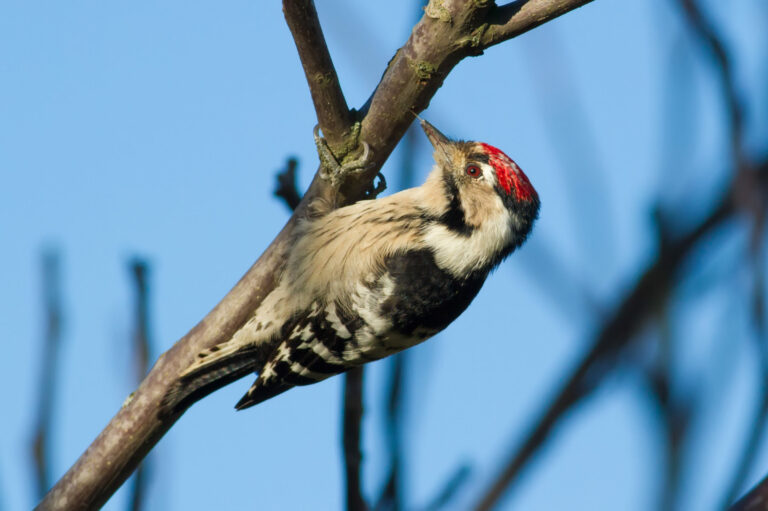Dryobates minor

The Lesser Spotted Woodpecker, measuring approximately 15 cm, is one of the smaller birds in the woodpecker family. Its upper body is black with white bars, while the underparts are light-colored with dark streaks. The male has a red crown on its head, while the female has a white-yellow crown. Dryobates minor primarily inhabits open deciduous forests, where it tends to stay in the treetops. Woodpeckers are adapted to arboreal life, primarily through their long chisel-like bills, supporting tails, and climbing feet (Schaefer 2018). Mating occurs in self-built tree cavities during the spring (Becker 1901).
Diet: The Lesser Spotted Woodpecker primarily feeds on insects. It taps the tree bark with its beak and consumes the exposed insects (Becker 1901).
Threat Status: The global populations of the Lesser Spotted Woodpecker are declining; however, according to the IUCN Red List of Threatened Species, it is currently classified as “least concern.” In Germany, it is listed on the preliminary warning list for endangered species.
-
Becker, F (1901)Der Kleinspecht oder kleine Buntspecht. In: Nerthus 3 (16), S. 258–260.
-
Schaefer, M (2018)Brohmer – Fauna von Deutschland. Ein Bestimmungsbuch unserer heimischen Tierwelt: Quelle & Meyer Verlag GmbH & Co.